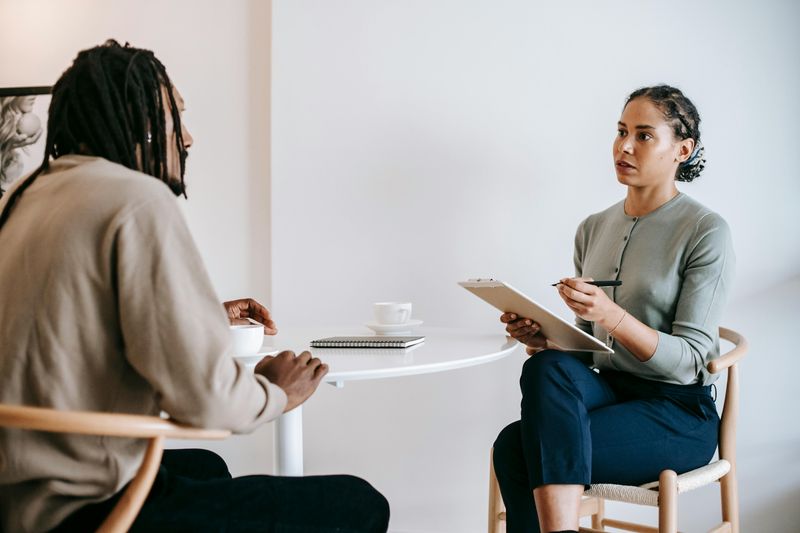15 Subtle Tricks to Help You Spot Even the Most Convincing Liars

Nobody wants to be fooled, yet even the smartest people fall for lies every day. Whether it’s a friend stretching the truth or someone trying to manipulate you, knowing how to spot dishonesty can protect you from being misled. Learning these subtle tricks will sharpen your ability to see through even the most convincing performances and help you trust your instincts when something feels off.
1. Watch for Story Inconsistencies

Liars often trip over their own words when they retell the same story. Pay attention when someone shares details that don’t quite match up with what they said earlier. Memory works differently than invention, so truthful people usually recall events the same way each time.
Ask follow-up questions at different times and notice if the answers change. Real memories stay consistent because they actually happened. When someone fabricates information, they might forget what they said before and accidentally contradict themselves, revealing the truth behind their words.
2. Notice Over-Explanations and Extra Details

Someone who piles on unnecessary details might be trying too hard to convince you. Honest people usually give straightforward answers without feeling the need to justify every single point. When liars sense doubt, they often add more information hoping it will make their story sound more believable.
Listen for explanations that seem longer than they need to be. If someone goes into extreme specifics about minor parts of their story, they could be overcompensating. Truth doesn’t require elaborate decoration, while deception often hides behind walls of words.
3. Check Their Eye Contact Patterns

Eye contact tells you a lot about honesty, but it’s trickier than you might think. Some liars avoid looking at you because guilt makes them uncomfortable. Others do the opposite and stare too intensely, trying to prove they’re telling the truth through forced eye contact.
Look for what feels natural versus what seems staged. Most honest conversations involve a comfortable balance of looking at someone and occasionally glancing away. When eye contact feels either completely absent or unnaturally constant, your gut might be picking up on something worth investigating further.
4. Observe Facial Touching Habits

Hands gravitate toward the face when people feel anxious or uncomfortable. Touching the mouth, nose, or throat can signal that someone is holding back the truth. It’s almost like their body is trying to physically stop the lies from coming out.
Watch how often someone reaches for their face during your conversation. While occasional face-touching is normal, repeated gestures might indicate stress related to dishonesty. The subconscious mind creates these movements as a self-soothing response when someone knows they’re not being truthful with you.
5. Look for Fidgeting and Restless Movements

Nervous energy has to go somewhere, and liars often channel it through fidgeting. Tapping fingers, shifting weight constantly, or playing with objects nearby can all signal internal discomfort. When someone feels guilty about deceiving you, their body language often gives them away before their words do.
Notice if someone suddenly becomes more restless when certain topics come up. Truthful people generally maintain steadier physical composure. Increased fidgeting during specific questions might mean those particular subjects make the person uncomfortable because they’re not being honest about them.
6. Listen for Delayed Responses

Truth comes quickly because it’s already stored in memory. Lies take time to construct, which is why liars often pause longer before answering. That extra second or two gives them time to invent a believable response rather than simply recalling what actually happened.
Pay attention to how quickly someone responds to direct questions. Immediate answers usually indicate honesty, while noticeable delays might suggest fabrication. Of course, some questions naturally require thought, but unusual hesitation on simple matters could be a red flag worth noting.
7. Count the Filler Words

Words like “um,” “uh,” and “like” pepper everyone’s speech occasionally. However, liars use them more frequently because they’re buying time to think. Each filler word represents a tiny pause where the brain is working hard to create a convincing story instead of remembering real events.
Track how often someone uses these verbal placeholders during your conversation. A sudden increase in filler words when discussing certain topics suggests discomfort or uncertainty. Honest recollection flows more smoothly, while deception stumbles through the mental work of invention.
8. Catch Microexpressions on Their Face

Faces reveal emotions faster than we can control them. Microexpressions are tiny, involuntary facial movements that flash across someone’s features in less than a second. They show true feelings before the person has time to mask them with a more socially acceptable expression.
Train yourself to notice these quick changes. A brief look of fear, guilt, or disgust might contradict what someone is saying out loud. While microexpressions are subtle and easy to miss, learning to spot them gives you valuable insight into what someone really feels versus what they want you to believe.
9. Recognize Over-Defensive Reactions

Honest people usually stay calm when questioned because they have nothing to hide. Liars, on the other hand, might become suddenly defensive or overly emotional when you ask for clarification. This reaction stems from feeling threatened that their deception might be discovered.
Notice if someone gets angry or upset when you simply ask reasonable questions. Defensive responses like “Why don’t you trust me?” or “I can’t believe you’d even ask that!” often serve to shut down further inquiry. Truth welcomes questions, while lies try to avoid them through emotional manipulation.
10. Spot Mismatches Between Words and Body Language

Your body often tells the truth even when your mouth doesn’t. Someone might say they’re excited while their shoulders slump and their face looks bored. These contradictions between verbal messages and physical signals are strong indicators that something isn’t quite right.
Watch the whole person, not just their words. If someone claims to be fine but their arms are crossed defensively and their jaw is clenched, believe the body language. Our conscious mind controls speech easily, but our bodies react more honestly to our true feelings and intentions.
11. Question Unusually Smooth Delivery

Stories that sound too perfect might actually be rehearsed lies. When someone has practiced their deception repeatedly, they can deliver it with unnatural smoothness. Real memories come with slight imperfections, pauses for thought, and natural variation in how we tell them.
Be suspicious of accounts that sound like prepared speeches. If someone recounts events with the exact same wording and rhythm every time, they might be reciting rather than remembering. Genuine experiences include small inconsistencies and natural speech patterns that polished lies often lack.
12. Notice Unusual Eye Movements

Where someone looks while thinking can offer clues about truth versus fiction. Many people look up and to the left when creating or imagining information, while looking up and to the right often accompanies genuine memory recall. Though not foolproof, these patterns can provide helpful hints.
Watch eye direction during conversations, especially when someone is answering questions. Consistent upward-left glances during supposedly factual accounts might indicate fabrication. Remember that this isn’t universal for everyone, but combined with other signs, unusual eye movements add another piece to the deception puzzle.
13. Test Their Story in Reverse

Here’s a clever technique: ask someone to tell their story backward, starting from the end. Truthful people can do this relatively easily because they’re recalling actual events. Liars struggle significantly because they constructed their story in chronological order and reversing it requires too much mental effort.
Use this sparingly but effectively. When you suspect dishonesty, casually ask them to walk you through what happened starting from the last thing they remember. Watch for increased stress, confusion, or an inability to comply smoothly with this simple request.
14. Pay Attention to Timing Changes

Liars often want conversations to end quickly so they can escape scrutiny. Notice if someone suddenly seems rushed or keeps checking the time when you ask probing questions. This urgency to leave might stem from discomfort with maintaining their deception under your attention.
Alternatively, some liars try to control timing by changing subjects rapidly or talking excessively to prevent you from asking questions. Both strategies aim to limit your opportunity to catch inconsistencies. When someone manipulates conversation pace dramatically, consider what they might be trying to hide or avoid discussing.
15. Trust Your Gut Feeling

Sometimes your instincts pick up on deception before your conscious mind does. That uncomfortable feeling that something is off might be your brain processing subtle cues too small to articulate. Human beings evolved to detect dishonesty as a survival mechanism, and those instincts still work today.
Don’t ignore that nagging doubt in your stomach. While you shouldn’t accuse someone based solely on intuition, let it guide you to look more carefully. Your subconscious might be noticing patterns and inconsistencies that deserve conscious examination before you decide whether to trust someone.

Comments
Loading…